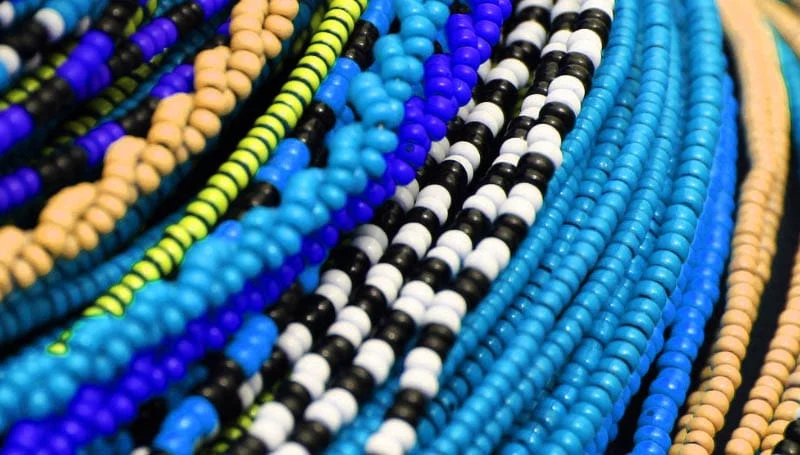In a world that often celebrates flawless facades and pristine perfection, there’s a quiet beauty hidden in the imperfections of life. It’s the beauty of a cracked vase, a chipped teacup, or, in our case, a broken bowl. These seemingly damaged objects carry stories and symbolism that speak to the very essence of our existence. In this journey of exploration, we’ll dive deep into the spiritual meaning of a broken bowl, uncovering its relevance to our lives, the wisdom it imparts, and the remarkable art of Kintsugi.
The Symbolism of Bowls
For centuries, bowls have served as vessels of sustenance and symbols of fertility, bringing nourishment to our bodies and souls alike. The simple, round form of a bowl represents the fullness of a woman’s belly, while its open top symbolizes the passage through which new life enters the world. In this way, bowls have been intrinsic to rituals and ceremonies related to childbirth and marriage across diverse cultures.

Because bowls are associated with nourishment, it is possible that a broken bowl could represent a poor crop or other issues relating to food security.
The Divine Feminine
Moreover, bowls hold a deep connection to the divine feminine in various spiritual traditions. These vessels, often associated with the womb and the act of giving birth, personify the nurturing, compassionate, and powerful aspects of the feminine energy. This power has been relegated to the shadows, with the world mistakenly equating compassion with weakness and kindness with vulnerability.
The divine feminine is not just about tenderness but also about strength. It’s about the balance between the nurturing embrace and the unyielding resolve. In a world where gender-related biases persist, the symbolism of a broken bowl can serve as a call to honor the strength and embrace the divine feminine energy that resides within us all.

Mesopotamia: Incantation Bowls
Our journey into the significance of bowls takes us to the ancient land of Mesopotamia, where incantation bowls played a pivotal role. These mystical objects were used to ward off evil spirits and misfortune. Placed near the entrances of homes and businesses or even buried beneath floors, incantation bowls were inscribed with powerful spells and prayers, intended to shield inhabitants from harm. The concept of protection through these bowls showcases the belief in their mystical properties.

Jewish Magic Bowls
Similarly, in the realm of Jewish folklore, magic bowls were crafted for folk magic akin to Mesopotamian incantation bowls. These clay vessels, inscribed with Hebrew spells, were believed to bring about supernatural outcomes, such as causing illness in an adversary or preventing harm. Some went so far as to bury these bowls near the homes of those targeted by the spells. This tradition reflects a belief in the potency of bowls to influence the unseen forces of the world.
Also Read: Finding A Spoon Spiritual Meaning – What You Need To Know
Kapala Bowls
Turning our gaze to Hinduism, we encounter Kapala bowls. These sacred vessels, traditionally made from brass or copper, hold a unique place in Hindu ceremonies where food and drink offerings are made to the gods. Adorned with depictions of deities, Kapala bowls not only serve a religious purpose but are also considered symbols of luck, believed to attract prosperity and good fortune. These bowls serve as a reminder that, beyond their utilitarian value, bowls can carry profound spiritual significance.

As we traverse these diverse cultures and their reverence for bowls, we begin to grasp the universal resonance of these vessels in human experience. Their symbolism transcends borders, highlighting the importance of nourishment, fertility, and spiritual connection in the human journey. Yet, it is when a bowl is broken that it takes on a new and intriguing dimension, one that calls us to ponder the beauty of imperfection and the art of Kintsugi.
Kintsugi: Embracing Imperfection
In our quest to understand the beauty of imperfection, we encounter Kintsugi—a traditional Japanese art form that illuminates this concept in a most tangible way. Kintsugi, which translates to “golden joinery,” is the practice of repairing broken pottery with lacquer mixed with powdered gold, silver, or platinum. This art form dates back to the 15th century but has seen a resurgence in recent years, captivating hearts and minds across the globe.

The Philosophy of Kintsugi
At the heart of Kintsugi lies a profound philosophy—one that embraces flaws rather than concealing them. When a ceramic piece breaks, rather than disguising the fracture, Kintsugi highlights it, making it a central feature. The repaired object becomes a tapestry of cracks, each glistening with precious metals. It tells a story of breakage and renewal, of acknowledging the past while embracing transformation.
Embracing Imperfection
Kintsugi teaches us that imperfection is not something to hide or be ashamed of; instead, it’s something to celebrate. It invites us to recognize that our own lives, like the mended pottery, can become more beautiful after being broken and repaired. Our flaws, scars, and life experiences are what make us unique and resilient.
Applying the Broken Bowl to Everyday Life
As we reflect on the spiritual meaning of a broken bowl and the art of Kintsugi, it’s crucial to consider how these concepts can be applied to our everyday lives. The broken bowl serves as a metaphor for our personal experiences, highlighting that, just like the bowl, we can be fractured by life’s challenges.
The Obsession with Perfection
In a world that often places a premium on perfection, we frequently find ourselves pursuing idealized standards, whether in our careers, relationships, or possessions. The quest for flawless beauty and unblemished success can be exhausting and ultimately unfulfilling.
Embracing Imperfection in a Flawed World
The symbolism of a broken bowl and the art of Kintsugi invite us to pause and reflect. They remind us that imperfections are not failures but rather a testament to our journeys. They encourage us to find strength in our vulnerabilities and beauty in our scars. When we embrace our imperfections, we begin to embrace our authentic selves.
In the next section of our exploration, we will delve deeper into how Kintsugi can be a profound gift—a reminder that imperfection is not only beautiful but also a source of strength. We will discuss how it can serve as a gentle nudge to those who are overly focused on material possessions and the pursuit of perfection, reminding them of the value of embracing life’s inevitable cracks and crevices.
The Gift of Kintsugi (Broken Bowl)

A Gentle Reminder of Imperfection’s Beauty
Imagine, for a moment, that you have a friend or loved one who seems perpetually entrapped in the allure of perfectionism, always striving for the gleaming and the unblemished. To them, imperfections may appear as faults to be concealed or failures to be fixed, rather than as facets of a rich and complex identity. For such individuals, the concept of Kintsugi—the art of embracing imperfection—can serve as a profound and special reminder .
A Symbolic Gesture of Love and Understanding
Gifting a Kintsugi-repaired piece to someone entrapped in the pursuit of perfect material possessions is a gesture of love, understanding, and empathy. It signifies that you acknowledge their struggles and wish to remind them that imperfections are not to be shunned but embraced. In the cracks and breaks of life, there is beauty, strength, and a unique story waiting to be unveiled.
The Power of Imperfection
Kintsugi stands as a testament to the power of imperfection. When a beloved object shatters, it does not lose its worth; rather, it gains a new, compelling narrative. Similarly, when an individual stumbles, faces challenges, or confronts their own imperfections, they are not diminished; they are transformed. Their experiences, like the golden seams of Kintsugi, add depth and character to their life’s story.

Embracing Imperfection in Everyday Life
In our contemporary world, where the quest for perfection can be relentless, it is paramount to shift our perspective. Kintsugi encourages us to view our scars, physical or emotional, as marks of resilience and strength. It teaches us that the cracks in our lives, far from being sources of shame, are opportunities for growth and transformation.
Authenticity Over Conformity
The message of Kintsugi compels us to prioritize authenticity over conformity. In a society often fixated on standardized ideals, it champions the uniqueness inherent in every individual. It suggests that the pursuit of authenticity can be more rewarding than the quest for perfection, for it leads to self-discovery and acceptance.
Finding Beauty in the Flawed
By embracing imperfection, we learn to find beauty in the flawed. Just as Kintsugi repairs pottery with precious metals, we too can elevate our lives through our experiences, turning what was once considered a blemish into a source of pride and strength.
In a world that tends to overlook the beauty of imperfection, Kintsugi invites us to pause, reflect, and celebrate the intricate tapestry of our lives. It is a poignant reminder that, far from being disposable, our stories, marked by trials and triumphs, are worth cherishing.
The Spiritual Meaning of a Broken Bowl
In the journey from the spiritual symbolism of a broken bowl to the resplendent art of Kintsugi, we have traversed a path filled with wisdom, symbolism, and the profound beauty of imperfection. We have come to understand that, much like the broken bowl repaired with gold, our lives are enriched by our scars, our stories, and our imperfections.
As we navigate the complexities of existence, let us remember the lessons of the broken bowl and Kintsugi: that imperfection is not a sign of weakness but a testament to our strength, and that our scars, like precious metals, can illuminate the tapestry of our lives. In the pursuit of perfection, may we find the courage to embrace our unique stories and share them with the world, for it is in the cracks and crevices of our existence that the most profound beauty often resides
If you have a friend who struggles with a fascination in the glamourous life of material possessions, always wanting the new and clean looking product, perhaps a gift of Kintsugi will be a gentle reminder that not everything has to be new and shiny.

The Broken Bowl Meaning FAQ’s
1. What is the spiritual meaning of a broken bowl?
A broken bowl symbolizes the beauty of imperfection, reminding us of strength and resilience.
2. How do bowls symbolize nourishment and fertility?
Bowls, with their round shape, represent a woman’s full belly and signify nourishment and fertility.
3. Why are bowls significant in various cultures?
Bowls play essential roles in rituals worldwide, from protecting homes in Mesopotamia to magical practices in Jewish culture.
4. What is Kintsugi?
Kintsugi is a Japanese art of repairing broken pottery with precious metals, emphasizing the beauty of imperfection.
5. What does Kintsugi teach us about imperfection?
Kintsugi teaches that imperfections should be embraced, not hidden, as they add depth and character to our lives.
6. How can Kintsugi be a gift to someone focused on material possessions?
Gifting Kintsugi symbolizes empathy and reminds individuals that imperfections are to be celebrated, not concealed.
7. Why should we prioritize authenticity over perfection?
Prioritizing authenticity fosters self-discovery and acceptance, enriching our lives with unique experiences.
8. How does embracing imperfection lead to personal growth?
Embracing imperfection allows us to view life’s challenges as opportunities for growth and transformation.
9. What is the ultimate message of Kintsugi and the broken bowl symbolism?
Both convey that imperfections and scars can illuminate the tapestry of our lives, making them worth cherishing and celebrating.







